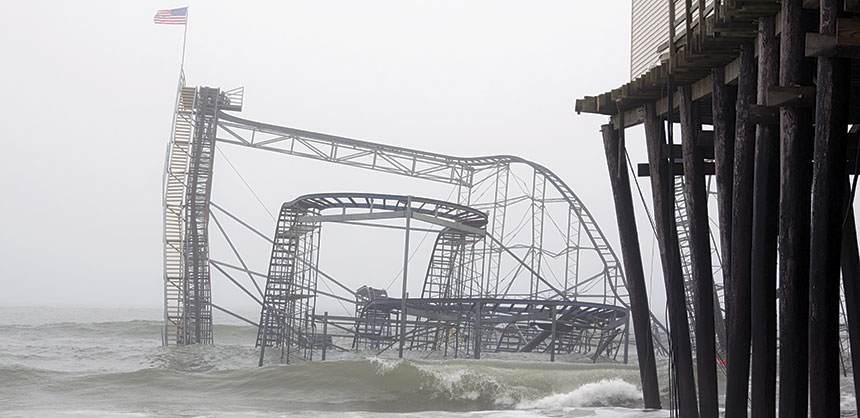Lessons From Superstorm SandyDecember 1, 2013
Be Prepared With a Solid Communications Strategy By Derek ReveronLessons From Superstorm Sandy
Be Prepared With a Solid Communications Strategy
An iconic image — The Casino Pier Star Jet roller coaster was submerged just off the Seaside Heights, NJ, boardwalk after Hurricane Sandy in October 2012 and demolished in May 2013. Credit: Glynnis Jones/Shutterstock.com
Hurricane Sandy, which severely battered the East Coast in October 2012, was a hurricane of historic proportions. Sometimes called Superstorm Sandy, it was the first storm in recorded history to take a sharp left-hand turn into New Jersey as it traveled northward, and it was the first time historical maximum water levels were recorded in several places in NJ and NY.
Today, the fallout from the storm lingers as associations were forced to cancel or postpone conferences that were scheduled in destinations in the storm’s path. Moreover, some associations learned that their severe weather emergency plans were neither strong nor broad enough to cover such a weather event. These groups learned valuable lessons and tweaked their crisis plans accordingly. Most of all, organizations learned that a strong and comprehensive communications strategy is a crucial element of a weather crisis plan.








